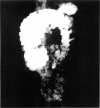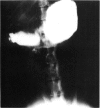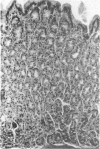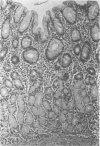Abstract
In a series of experiments, rhesus monkeys have been given in their diets 0.3, 1.5, and 25 ppm of a commercial polybrominated biphenyl (PBB) (as FireMaster FF-1). The seven adult female monkeys receiving 0.3 ppm PBB have been on the treatment regime for 15 months and have consumed over 22 mg of PBB. During the initial 6 months of exposure, they lost weight and 2 of the animals develop sterile abscesses. At 6 months, 4 of the 7 animals had flattened and lengthened serum progesterone peaks. This change was correlated with an increase in length of their menstrual cycles. After 6 months of PBB exposure, the animals were bred. Two of the 7 animals showed excessive and prolonged implantation bleeding. Two abortions and 5 live births were recorded. All of the experimental infants were smaller than the controls at birth. The animals receiving a diet containing 1.5 ppm PBB for 36 weeks (total intake 70 mg) have shown a moderate weight loss and decrease in serum cholesterol. Similar changes have also been recorded in the group given the 25 ppm PBB diet for 14 weeks (approximately 500 mg total intake). In addition, these animals have also developed a hyperplastic gastritis.
Full text
PDF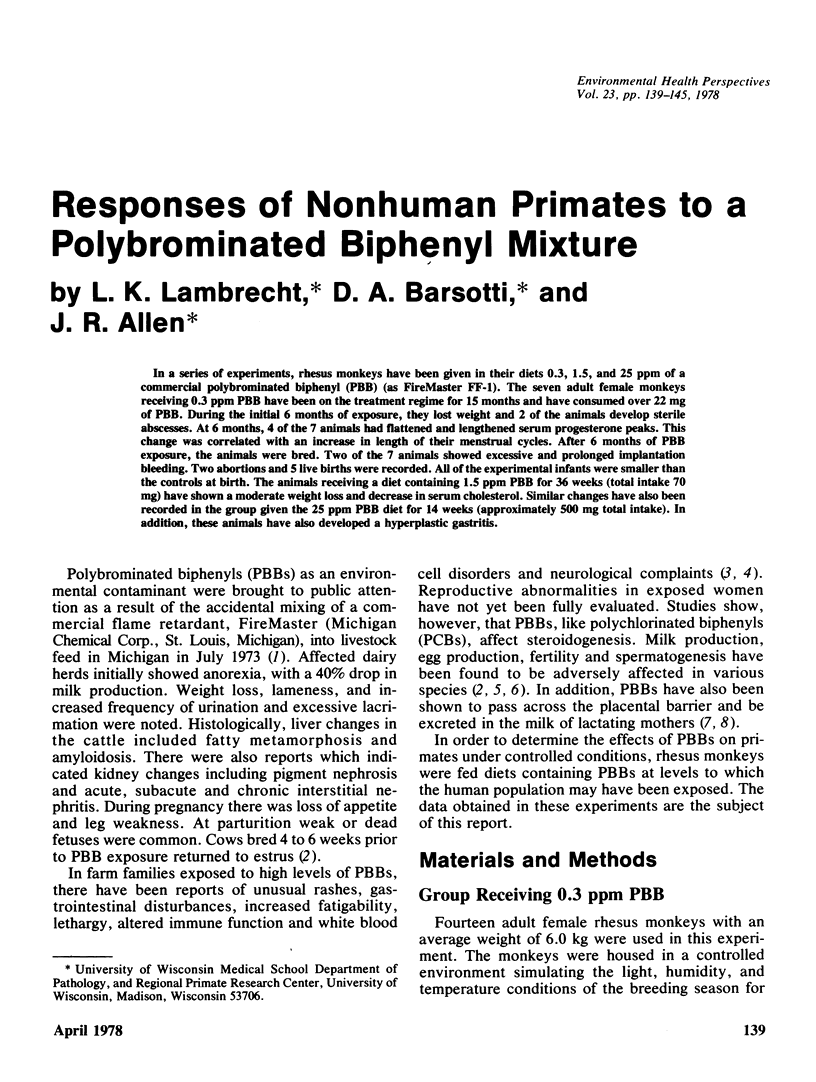

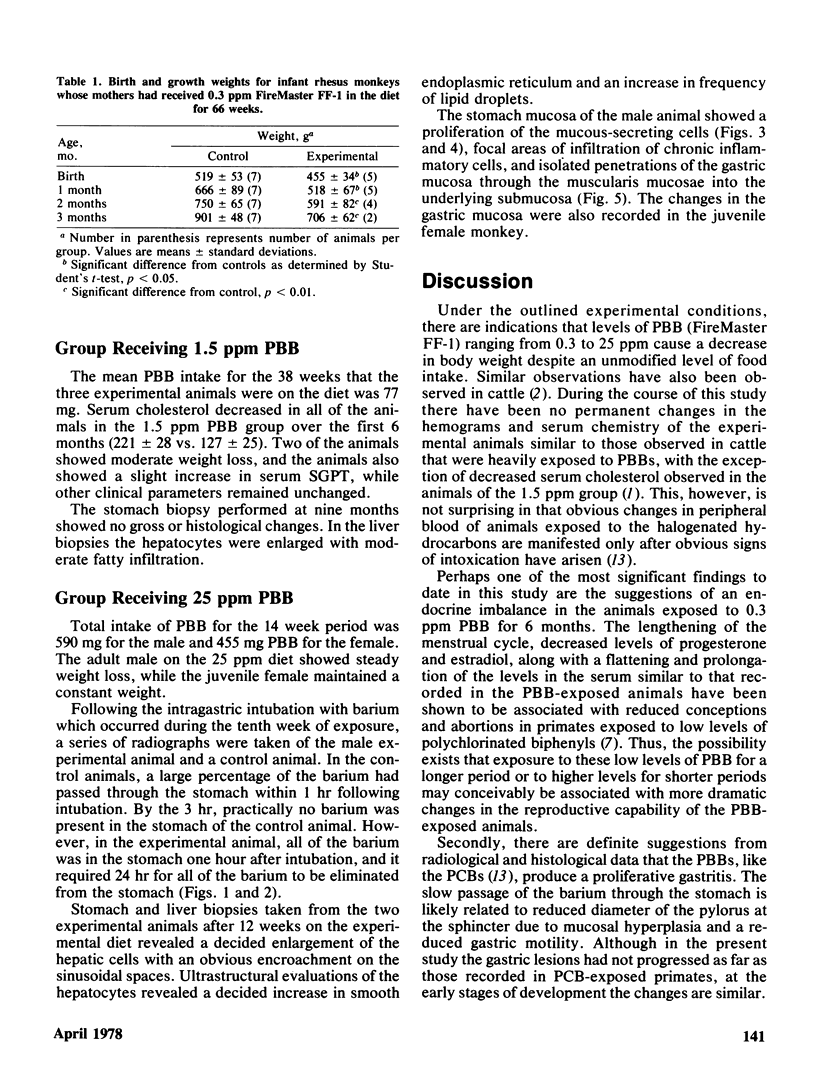


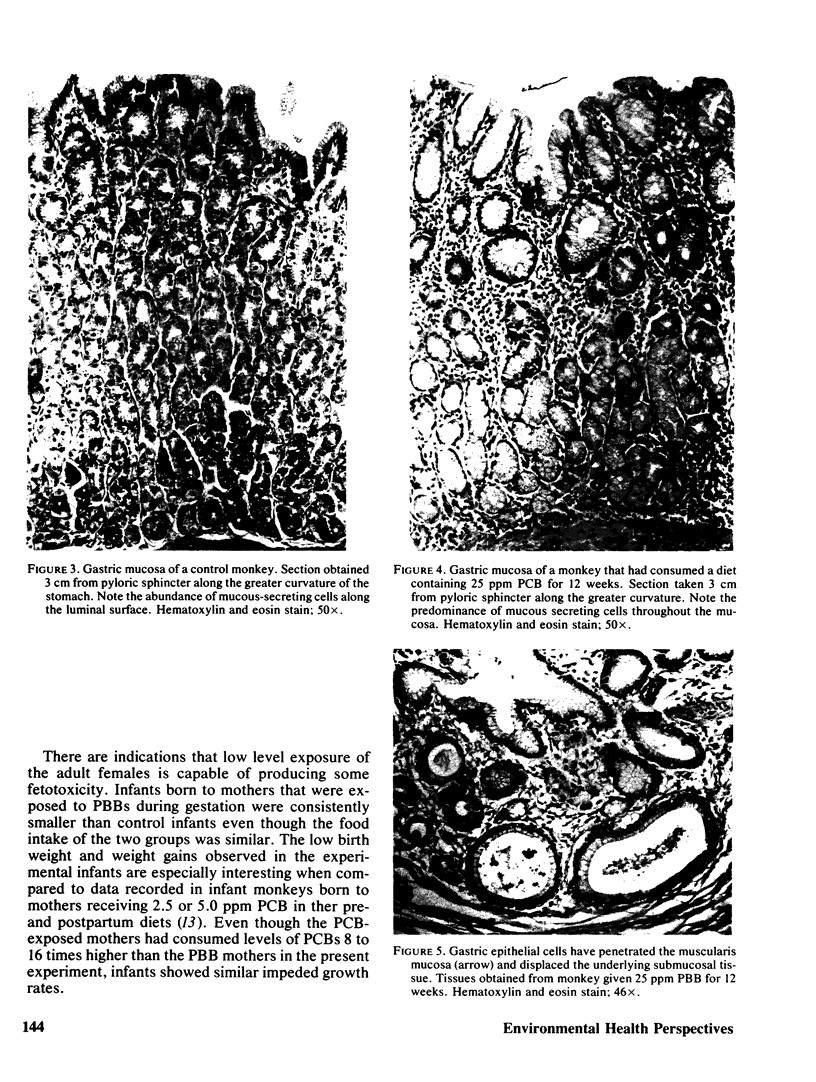
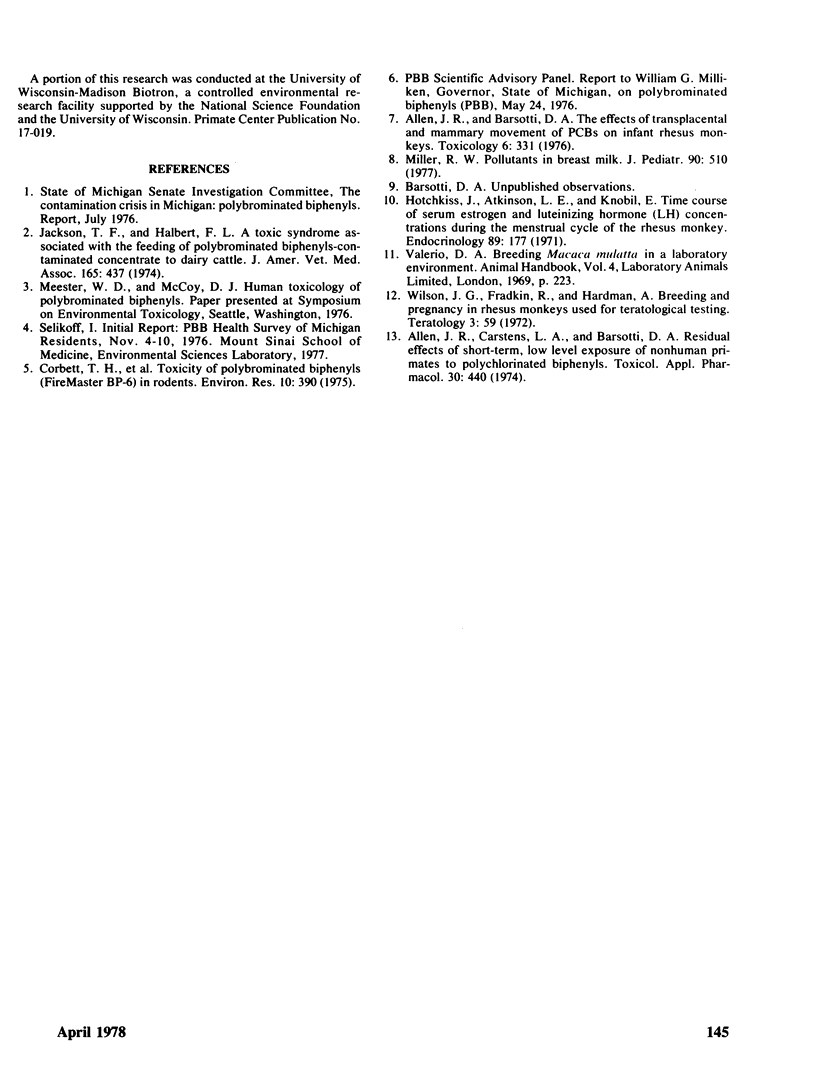
Images in this article
Selected References
These references are in PubMed. This may not be the complete list of references from this article.
- Allen J. R., Barsotti D. A. The effects of transplacental and mammary movement of PCBs on infant rhesus monkeys. Toxicology. 1976 Nov-Dec;6(3):331–340. doi: 10.1016/0300-483x(76)90037-8. [DOI] [PubMed] [Google Scholar]
- Allen J. R., Carstens L. A., Barsotti D. A. Residual effects of short-term, low-level exposure of nonhuman primates to polychlorinated biphenyls. Toxicol Appl Pharmacol. 1974 Dec;30(3):440–451. doi: 10.1016/0041-008x(74)90265-8. [DOI] [PubMed] [Google Scholar]
- Corbett T. H., Beaudoin A. R., Cornell R. G., Anver M. R., Schumacher R., Endres J., Szwabowska M. Toxicity of polybrominated biphenyls Firemaster BP-6 in rodents. Environ Res. 1975 Dec;10(3):390–396. doi: 10.1016/0013-9351(75)90034-1. [DOI] [PubMed] [Google Scholar]
- Hotchkiss J., Atkinson L. E., Knobil E. Time course of serum estrogen and luteinizing hormone (LH) concentrations during the menstrual cycle of the rhesus monkey. Endocrinology. 1971 Jul;89(1):177–183. doi: 10.1210/endo-89-1-177. [DOI] [PubMed] [Google Scholar]
- Jackson T. F., Halbert F. L. A toxic syndrome associated with the feeding of polybrominated biphenyl-contaminated protein concentrate to dairy cattle. J Am Vet Med Assoc. 1974 Sep 1;165(5):437–439. [PubMed] [Google Scholar]
- Miller R. W. Pollutants in breast milk: PCBs and cola-colored babies. J Pediatr. 1977 Mar;90(3):510–511. doi: 10.1016/s0022-3476(77)80752-x. [DOI] [PubMed] [Google Scholar]
- Wilson J. G., Fradkin R., Hardman A. Breeding and pregnancy in rhesus monkeys used for teratological testing. Teratology. 1970 Feb;3(1):59–71. doi: 10.1002/tera.1420030112. [DOI] [PubMed] [Google Scholar]



